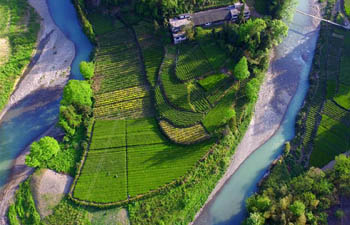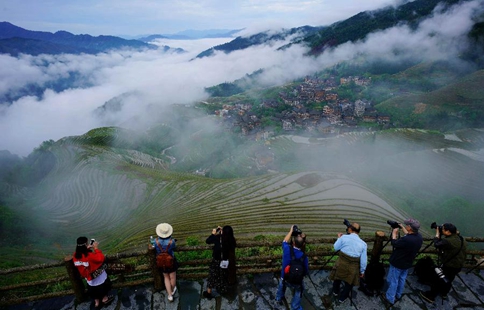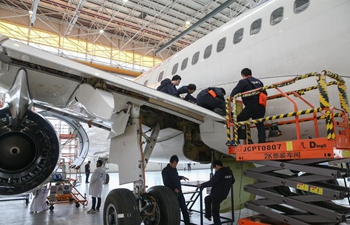SAN FRANCISCO, April 23 (Xinhua) -- A team of researchers at Stanford University has created a "Living Map" of innovative ways to finance water projects in the United States.
It came at a time as the American Society of Civil Engineers gave the nation's infrastructure a near failing grade last month and estimated that the country would need to spend 4.59 trillion U.S. dollars by 2025 to bring its infrastructure back up to even a B- level.
Due to the combined pressures of population growth, urbanization and impacts from climate change, water infrastructure is in particular need of renewed investment. Federal and state funding for these types of projects is limited, and local entities are usually too cash-strapped to meet current maintenance costs.
"We need a new playbook that embraces a holistic view of our water system and offers new ideas and solutions for our aging infrastructure," said Newsha Ajami, director of urban water policy at Stanford's Water in the West program and leader of the map project.
"Integrating distributed water projects such as green infrastructure, wastewater recycling and storm- and graywater reuse into our current infrastructure network can enhance the flexibility and reliability of our water systems," Ajami said.
The case studies feature some market-based systems like credit and permit trading used to implement "green infrastructure" projects built to manage stormwater runoff. One example looks at the Stormwater Retention Credit Trading Program in Washington, D.C., which enables property owners who install green infrastructure to generate credits that can be bought and sold on an open market and used to meet regulatory requirements. It helps capture stormwater and prevent pollutants from entering the Chesapeake Bay and local waterways.
"The fact that it's hard to access funding for distributed and unconventional water projects is not an excuse not to act," Ajami was quoted as saying in a news release.
"The Living Map gives a visual understanding of what is happening throughout the country and how grants, rebates, fees and other innovative governance structures are used to fund alternative water projects," he added.
The map is expected to be updated as more case studies of new and different ways of looking at water infrastructure needs come to light.

















